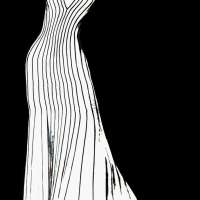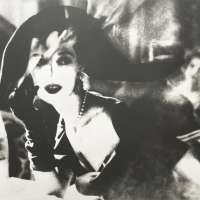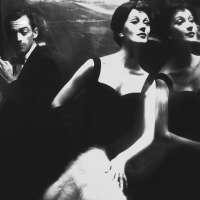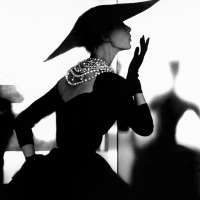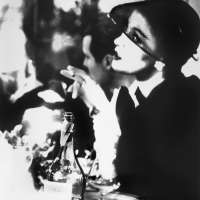Lillian Bassman
Lillian Bassman Biography Lillian Bassman (1917 - 2012) was born in Brooklyn, New York, to parents she once described as “bohemian.” This fashion photographer fell in love fast with the photographs of dancer Isadora Duncan in her flowing, floating gowns, inspiring Lillian’s affinity for scarves which she attributed to Isadora’s sinuous, constantly moving fabrics. Lillian worked as a textile designer and fashion illustrator before working at Harper’s Bazaar in 1946. In 1949, she photographed her first Paris couture collection, which led to Lillian Bassman’s distinguished career as a photographer of the era’s leading models. However, she once claimed it took her years to become interested in photography. Instead, Lillian wanted to illustrate fashion, use her eye for the curves and flow of the female body and turn blank paper into fashion plates. This keen eye for what works and what does not work on a woman’s body is evident in her stark black and white photographs of the acclaimed models of her time. The lines nearly always fade to a haze in these images, making the photos appear dreamy and fluid. Renowned for her innovative work in the darkroom, Lillian Bassman experimented by printing through unique materials, burning certain areas, or bleaching sections of the photograph to create images that appeared to be a cross between a watercolor and a photograph. When she was 93, Lillian released a coffee-table book that featured several new works of art and reworked vintage pieces from shoots she completed in the 50s and 60s. The nonagenarian said she had left the darkroom permanently for a new tool, Photoshop. She edited her own photos and advocated for artists to adopt new techniques as technology evolved. Lillian Bassman’s photography has been featured internationally in gallery and museum exhibitions in New York, Milan, Paris, and London and are the focus of magazine articles, lectures, and books highlighting her incredible life and body of work. Just a year later, in 2012, Lillian Bassman died in her New York apartment. Her son, Eric, said she worked up to the very end. She left behind a son, Eric and a daughter, Lizzie. Lillian had been married for 74 years in 2009 when her husband, Paul Himmel, passed away. Her final work was titled Lillian Bassman: Lingerie. It debuted a month after her death in 2012 in an exhibit at the Peter Fetterman Gallery located in Santa Monica and on the other side of the country from Lillian’s New York apartment. It seemed fitting that this last exhibition should reuse photographs she took of models in the 50s and 60s, images that are starkly black and white and show women effortlessly comfortable in their skin. These women were long and lithe but not starved, glamorous but not perfected by surgery or makeup filters. Lillian made them look quixotic because that’s how she thought a woman ought to look. Lillian Bassman’s photography continues to shine and intrigue viewers across the world, just as she would have wanted.


